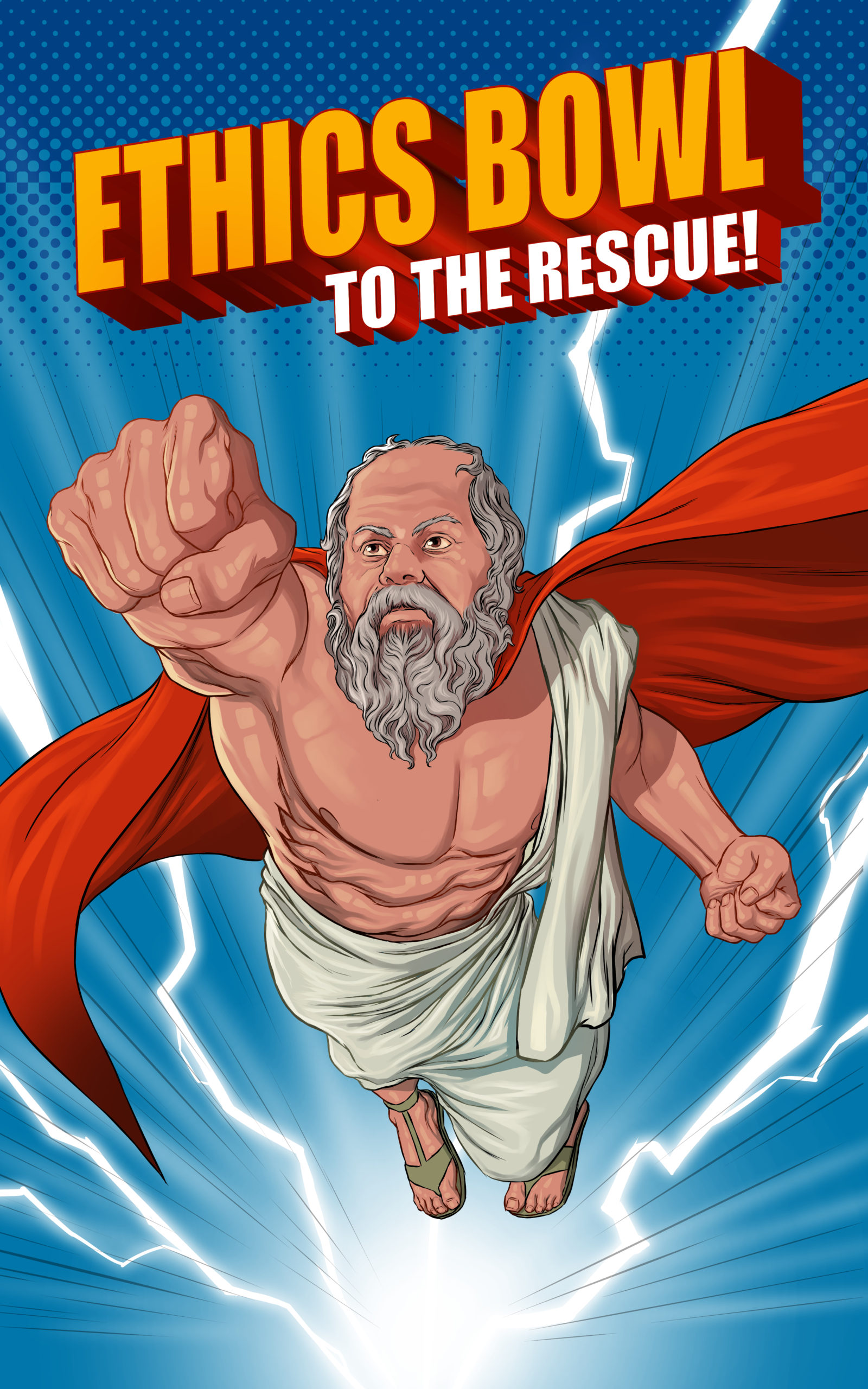Retired ethicist and friend John Hardwig recently forwarded the above talk hosted by Aidan Kestigan of ThinkerAnalytix.org with Dona Warren & Dave Dettman of the University of Wisconsin-Stevens Point. Reviewing the PowerPoint and watching the recording, it became apparent that what Warren and Dettman were talking about was very much aligned with and complementary to Ethics Bowl.
In a nutshell, here’s a process to try as a coach, or simply as an educator interested in elevating students’ civic IQ, or what Warren calls their “competence with controversy.” They didn’t explain this in terms of an Ethics Bowl case analysis, but I think it fits perfectly.
Pick a case. Read it aloud. Divide the team in half. Ask one half to research, be able to support and present on one perspective, and ask the other half to do the same for some opposing perspective.
I know this sounds an awful lot like debate. But hang with me! Warren and Dettman share Ethics Bowl’s preference for rational deliberation over mindless attack.
Bring the groups back together and have one present the position they’ve developed. Invite the other group to ask clarifying questions and challenge the first group’s logic. Now have the other team present their position, the first team now in challenger mode. Have the teams swap perspectives (adopting the argument the other initially pitched), do additional research, and prepare to present again, only this time in light of lessons learned during the first round.
Bring the groups back together and have them share/critique again – everyone should be becoming mini experts. And finally (and this is the Ethics Bowl overlap), have them discuss collaboratively which view seems to genuinely make the most sense. It won’t necessarily be either of the first two views, and very well could be some third alternative or hybrid. Either way, tada! More informed and humble students, plus the beginnings of a position the Ethics Bowl team can feel good about defending.
I suspect many coaches do something like this already. But maybe not. Back in my coaching days, anytime we’d broach a new case, students would naturally defend opposing views. But it was organic, not especially organized, and discussion was often defensive. The reason: students worried they might be personally connected to whatever view they were expressing. Even if the topic was safe, nobody likes to be wrong. And so fear over being an outcast or simply bested got in the way of reason.
Warren and Dettman actually talk about this and call the anxiety we all feel part of the “cognitive load” burdening our minds when discussing difficult issues. But one way to decrease that load and free up more mental bandwidth is to follow a standardized process like the above.
The last part is to “map” the arguments, which takes time, but can be quite powerful. As Waren puts it, “At first, it makes things harder.” However, “what you have eliminated is the unnecessarily complex presentation of material.” And what you gain is a whole lot of clarity about what you believe and why.
Regular EthicsBowl.org contributor Coach Michael Andersen also recommends argument mapping, and you can find some suggestions and resources from him by searching the blog. But one tip from Dr. Warren: use different colors to represent competing perspectives. That is, when you’re mapping objections and rebuttals, give the objections a different color than the primary argument, but give rejoinders the primary perspective’s color. “Just keep track of which team the color is playing for, and then give it that color on the map.”
Three bonus insights:
- Something Warren had to wait until grad school to hear from a professor: “A problem with implementing policy, of course, is that there are limited resources,” meaning we can’t explore Mars, maintain the naval fleet, cure cancer, cancel student loan debt AND rebuild the nation’s bridges simultaneously – the federal budget is not infinite, though Congress does behave that way at times.
- Try interpreting arguments “charitably” or “with empathy,” meaning in their best possible light. Why? While arrogance can be superficially fun, very few positions are completely baseless. By trying to understanding perceived competitors’ views while assuming they actually could be reasonable, we’re more likely to appreciate the kernel of wisdom behind them, or at least their proponents’ understandable motives. This is actually something I had to be reminded of in grad school…
- Dr. Dettman recommends a “dignity index” to encourage mutually respectful treatment among students. From DignityIndex.us, it’s “an eight-point scale that scores speech along a continuum from contempt to dignity in as unbiased a manner as possible. By focusing on the sound bites, not the people behind them, the Index attempts to stay true to its own animating spirit: that everyone deserves dignity.”
Thanks to Aidan Kestigan at ThinkerAnalytix for hosting, to Dr. Warren and Dr. Dettman for your talk and superb work, to the guests for their excellent questions and engagement, and to John for sharing. Ethics Bowl has many friends in the critical thinking community. And it’s always cool to stumble upon new allies.
